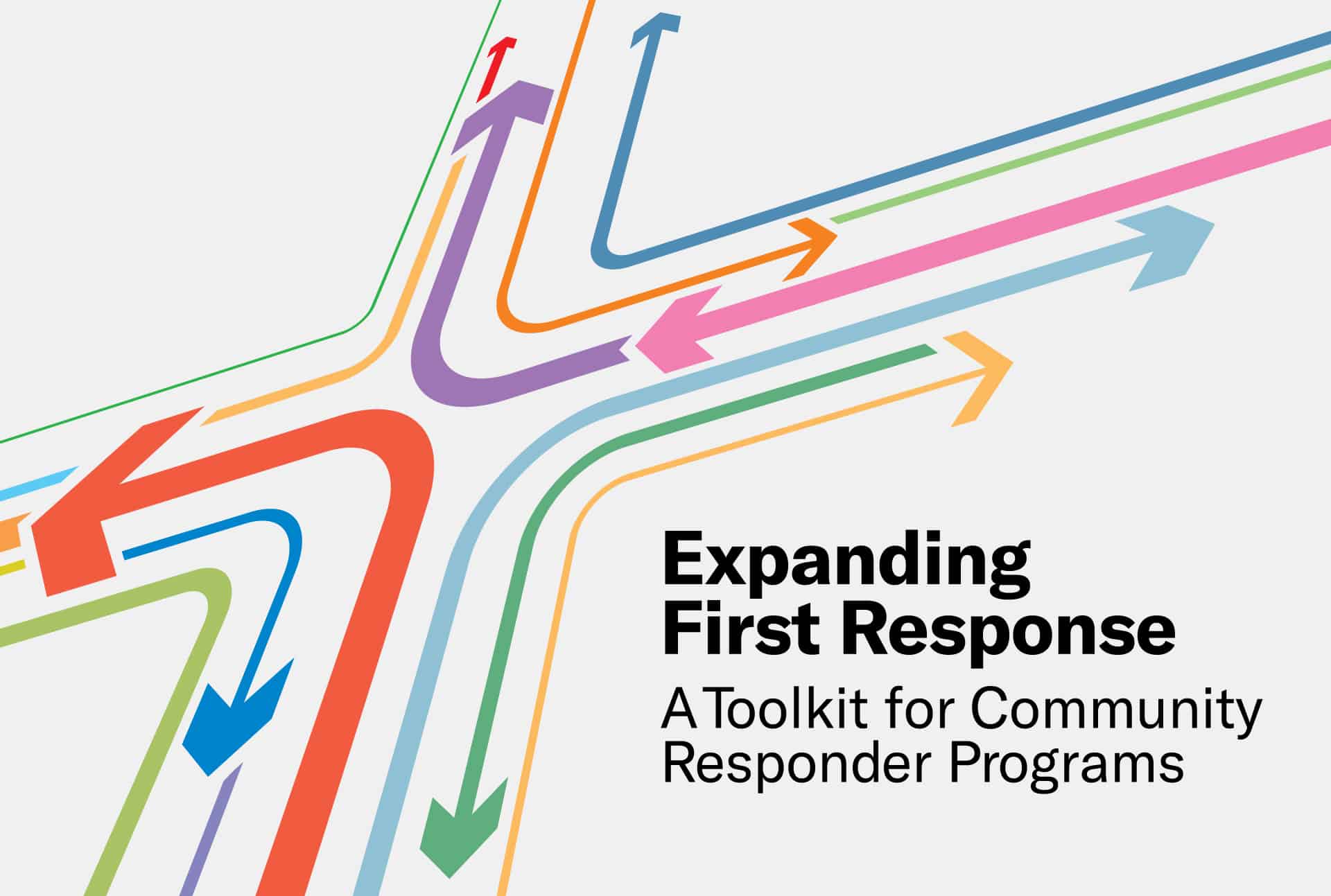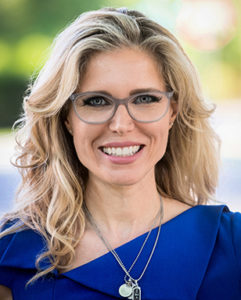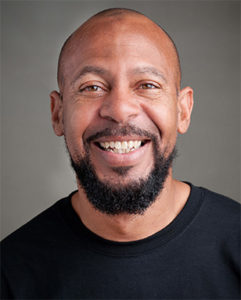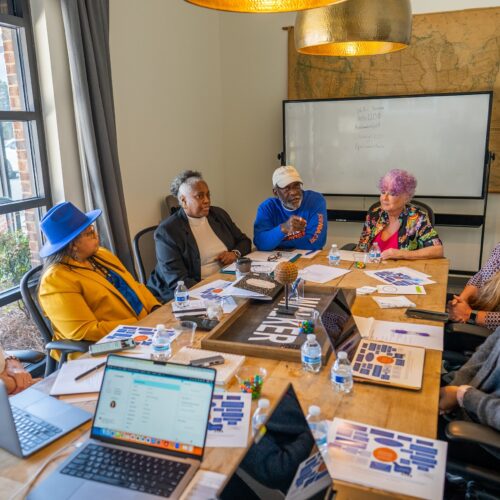
Promoting Staff Wellness to Support Outreach Workers: Q&A with the Newark Community Street Team
The Newark Community Street Team (NCST) is one of the leading organizations working across the country to change the ways that people think about public safety. Founded by Newark Mayor Ras Baraka, NCST serves as the city’s community-based violence interruption program, hiring, training, and deploying 38 outreach workers and high-risk interventionists in Newark, NJ. It employs nontraditional community leaders, including people who have been previously incarcerated, and operates the NCST Trauma Recovery Center. It is also a member of the Community-Based Public Safety Collective—a team of practitioners, trainers, and technical assistance providers who work with community responders across the U.S.
While NCST actively works to respond to mental health and other needs of Newark residents, it has also been committed to promoting staff wellness within. This has been through both traditional practices like Cognitive Behavioral Therapy (CBT), as well as nontraditional practices like yoga, reiki, and healing retreats. Staff at The Council of State Governments Justice Center spoke with Founder and Board Chair Aqeela Sherrills, Deputy Director Solomon Middleton-Williams, and Policy Director Elizabeth Ruebman to learn about their approach to prioritizing staff wellness within their program and how this could be used as a model for other community responder programs.

Elizabeth Ruebman
What made you recognize the importance of staff wellness?
Elizabeth: [Aqeela] knew we had to invest in the people doing this work because it is traumatizing, triggering work. People come with a lot of traumatic experiences.
We had reached a point where we needed more than just taking people to wellness services. We needed real mental health supports. We had a situation with someone on our high-risk intervention team; he just fell apart on us, and we didn’t really have anything to provide the support he needed. I wrote an emergency grant, and we got a team therapist who’s a Black male who was relatable to the team. He came and spoke to the whole team with humility and allowed them to ask him questions. Because most people have had really traumatic experiences with mental health service providers, we knew [the staff] would never use these services unless they were totally comfortable.

Aqeela Sherrills
How did you create a culture that supports staff wellness?
Aqeela: We model this for our staff—that there’s strength in vulnerability and humility. [And] this has been a part of our foundation. When we expose our deep secrets and pain, we give others permission to do the same and we can heal together… It’s one thing to be a victim and survivor of violence, but we don’t have to remain there. We can turn our pain to power.
Elizabeth: It was super important that things not be framed as therapy and not be framed in clinical terms. We started with things like holding hands in a circle when we did meetings, hugging each other, and starting to express our feelings to one another. So, we definitely had a slow build that really did start with allowing ourselves to be emotionally vulnerable with each other.
What feedback have you received from staff?
Solomon: Introducing wellness services, specifically CBT has been life-changing for some of our staff members. When they’re in the field, they’re able to identify triggers using the CBT skills they learned… So, it’s not only [helpful] in their personal lives, but when we talk about building infrastructure, we see this play out in the community that we’re able to stop future harm from happening.
What tips do you have to promote wellness among community responder programs?
Elizabeth: [Wellness] has got to be as essential as your salaries and your payroll. You have to really educate your funders about that. If you’re using government dollars to fund your work, they generally won’t pay for wellness services. So, that may mean in your funding strategy, you have to maybe pay salaries with one source and go to look for extra support to do wellness work. I really think you should not embark on doing a community responder model unless you have something in place to support staff wellness. I think it’s actually really irresponsible and dangerous.
We do not have a meaningful investment in community responder work. For people to do traumatizing work when they’re making minimum wage and are often working as contractors and don’t have job security and real stability, that all undermines wellness. It really contributes to burnout and makes it a challenge to mitigate the effects of staff trauma. That’s why we think that the pay scale that people in this work receive currently is completely unacceptable, and there should be investment in people’s financial stability.
What are some ways to promote alternative healing technologies?
Elizabeth: Challenging Eurocentric mentalities is very important. There’s an undoing racism connection to this and recognizing that wellness is going to look different for different communities. There are First Nations organizations that are reintroducing sweat lodges and other things, and that is transformative. I think colonization and separating people from those [ancestral] practices are what has caused so much violence and harm, and those all have to be included in staff wellness.
To learn more about incorporating staff wellness into community responder programs, Safety Protocols and Wellness for All Individuals.
About the author

A positive school experience, where a child feels secure, is essential for their well-being. However, for many children…
Read MoreWhen returning to their communities from criminal justice settings, people with behavioral health needs face barriers in accessing…
Read More Supporting Children of Incarcerated Parents: Reimagining School and Community Collaboration
Supporting Children of Incarcerated Parents: Reimagining School and Community Collaboration
A positive school experience, where a child feels secure, is essential for their well-being. However, for many children with incarcerated parents—one in 14 in the U.S.—school can feel far from safe due to stigma, trauma, and a lack of understanding.
Read More Assigned to the Cloud Crew: The National Incarceration Association’s Hybrid Case Management for People with Behavioral Health Needs
Assigned to the Cloud Crew: The National Incarceration Association’s Hybrid Case Management for People with Behavioral Health Needs
When returning to their communities from criminal justice settings, people with behavioral health needs face barriers in accessing basic needs—including food, housing, employment, transportation, education, clothing, and substance use and mental health services—which increases their risk of experiencing a crisis.
Read More Meet the Medicaid and Corrections Policy Academy Mentor States
Meet the Medicaid and Corrections Policy Academy Mentor States
New Hampshire Department of Corrections Commissioner Helen Hanks presents at the Medicaid and Corrections Policy Academy in-person meeting.
Read More Taking the HEAT Out of Campus Crises: A Proactive Approach to College Safety
Taking the HEAT Out of Campus Crises: A Proactive Approach to College Safety
The sharp rise in school shootings over the past 25 years has led school officials across the U.S. to take a closer look at ways to keep students safe. For Chaffey College in Rancho Cucamonga, California, a tragic incident at a nearby university hit close to home and spurred campus leaders to revisit their own school’s threat assessments and crisis responses.
Read More New Smart Supervision Resident Analyst Program to Increase Supervision Agencies’ Data Analysis Capacity
New Smart Supervision Resident Analyst Program to Increase Supervision Agencies’ Data Analysis Capacity
Ideally, leaders would have actionable data readily available to them when they need it most. However, many agencies encounter significant challenges related to procuring accurate, consistent, and timely data, often grappling with outdated systems and inadequate tools.
Read More










